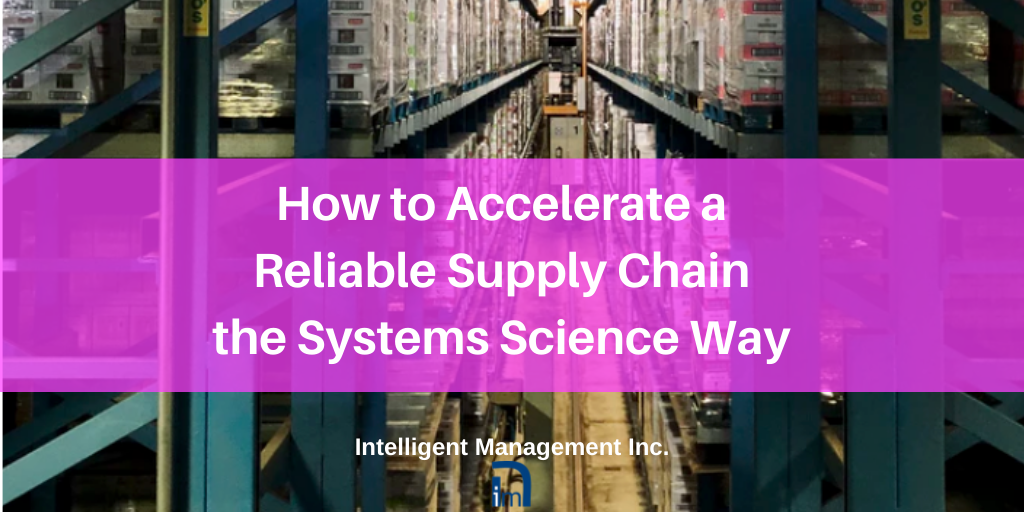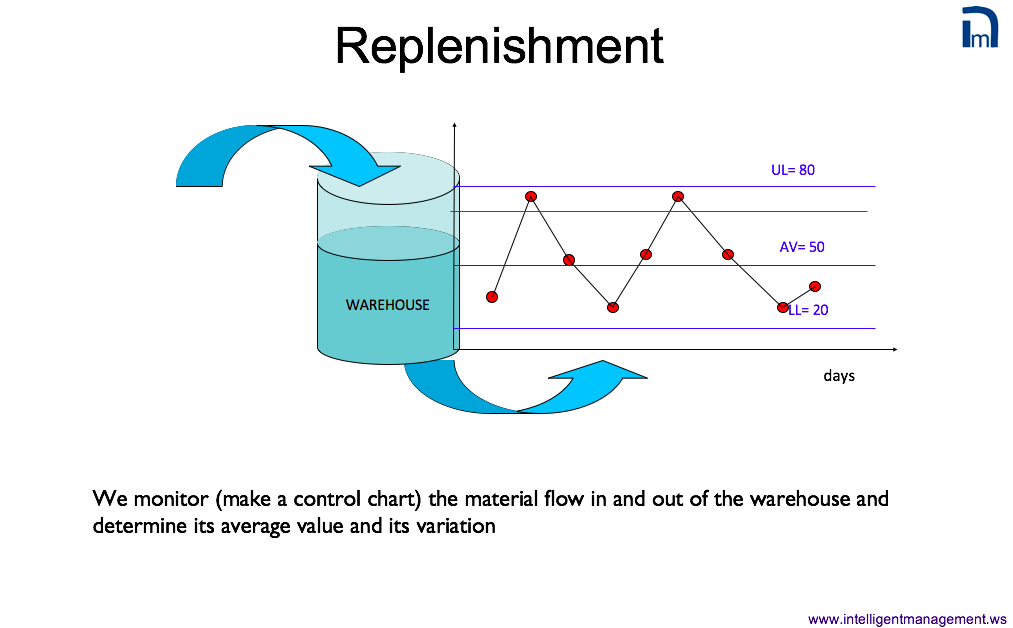
No matter what a company does, it is inevitably part of a supply chain. It receives inputs and has to transform these inputs into something to pass on to a customer reliably. It’s an ongoing process, and like every process it can be improved.
Today change is happening fast, threatening the survival of companies that can’t keep up. How can companies accelerate what they transform and supply? How can they make speed part of their performance? By being synchronized. This means synchronized internally in order to make the supply actions as smooth and predictable as possible. The more we are able to make our supply towards customers smooth and predictable, the happier our customers will be. This benefits not just us but the entire supply chain, by accelerating the flow of goods and services to end users.
Acceleration and the constraint
The most effective way to synchronize internally is by understanding that a company is a system made up of interdependencies that work together to achieve a common goal, and like every system, it has a constraint. This is not a negative. When companies understand how to strategically choose and manage a constraint, it becomes their greatest advantage. This is crucial so that all available resources can be used to produce maximum throughput by avoiding local optima decisions that might benefit a silo but not the company at large. It is the constraint that determines the pace/speed at which a system generates units of its goal, whether you are aware of it or not.
Maximizing the speed of supply flow
A good relationship with our suppliers and customers must be based on understanding our consumption (based on demand), and the shared goal to maximize the speed of flow from the supplier to the end consumer.
The Theory of Constraints has a precise approach to radically improve the supply chain process and it’s called Replenishment. The constraint in the supply chain process is the speed at which we move the material through the system. In order to avoid the unnecessary blockage and delay of being “out-of-stock”, we have to size the inventory of raw and finished material/products in a way that guarantees on-time delivery.
The only reliable way to do that is to understand the demand, understand the flow inside our organization, and to “buffer” the system with the right amount of material.
Improving the supply chain with statistical understanding
Replenishment from the Theory of Constraints is one of the most remarkable contributions to improving performance. However, we can take it even further and make it even more effective by using statistical understanding.
At Intelligent Management, our methodology embraces the Theory of Constraints within the systemic management approach of W. Edwards Deming. There is no reliable Flow without Quality, and Quality and reliability can only be achieved through a statistical understanding of what is going on. The same is true of Replenishment.
We have said that the relationship with our supplier must be based on the understanding of our consumption (based on demand). But this understanding has to be statistical.
Through the use of Statistical Process Control (SPC), together with an understanding of the interdependencies inside an organization and outside (suppliers and customers) we can develop an application for Replenishment management based exclusively on real consumption. We will also need to review purchasing and sales policies to make sure they are in line with maximizing flow and are not based on local optima and silo thinking.
So how do we use statistical understanding to do Replenishment? We make a control chart for the material flow in and out of the warehouse and determine its average value and its variation.
We make the control chart of the sales (consumption), and if sales are in control, i.e. predictable, we can trust that the value will stay within 3 sigma (sales) of its average value, let’s call it AC (average consumption per unit of time).
Our supplier delivers every N units of time, with a variation sigma (supplier) (also assessed with a control chart). What is the minimum safe level of products in the warehouse?
The maximum flow we can expect in material consumption is AC + 3 sigma(sales) per unit of time.
The longest delivery time we can expect from the supplier is N + 3 sigma(supplier) units of time.
The replenishment level is then just the product of these numbers (AC + 3 sigma(sales) ) x (N + 3 sigma (supplier) ).
We have thus established the right level of inventory. Any agreement with the supplier will be made on the basis of our average consumption, but we only replenish what we sell. If we sell more, we ask for more. If we sell less, we ask for less. “Buffering” the system with the right amount of raw material and finished product, based on the statistical understanding of the consumption, will allow us to free up cash immobilized in inventory.
It also benefits our suppliers because if we are statistically reliable then our demand from them is also reliable and predictable.
A different mindset
Accelerating a reliable supply chain is not about technique. It’s about adopting a different mindset, one that is based on the concept of flow, speed and subordinating to the overall goal of the organization, not local optima and the performance of silos. Ultimately, it’s about serving the overall goal of the entire supply chain because we are all interdependent in our world of increasing complexity.
As Deming says, it is all about transformation. Our goal, as individuals and organizations, should be nothing less than transformation. Into what? Into being the fastest and most effective vessels for making our potential real and happening. That means making our supply chains the fastest and most effective they can be. This is the way to build win-win, sustainable prosperity. Any attempt to cash in on artificially slowing up this supply process through hedging is not just ineffective but highly unethical. For those accustomed to the “protection” of hoarding inventory, this is an uncomfortable process of change.
But then, as Deming put it,
Learning is not compulsory, but neither is survival.
Intelligent Management has been guiding organizations to understand a systemic approach to manage complexity and improve performance for over 20 years through our Decalogue management methodology. The Network of Projects organization design we developed is supported by our Ess3ntial software for multi-project finite scheduling based on the Critical Chain algorithm.
See our latest books Moving the Chains: An Operational Solution for Embracing Complexity in the Digital Age by our Founder Dr. Domenico Lepore, The Human Constraint – a digital business novel that has sold in 41 countries so far by Dr. Angela Montgomery and ‘Quality, Involvement, Flow: The Systemic Organization’ from CRC Press, New York by Dr. Domenico Lepore, Dr. .Angela Montgomery and Dr. Giovanni Siepe.






Leave a Reply